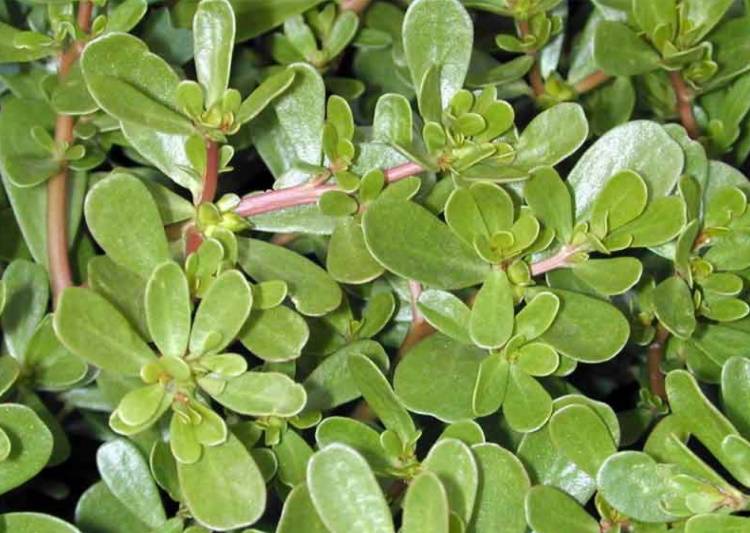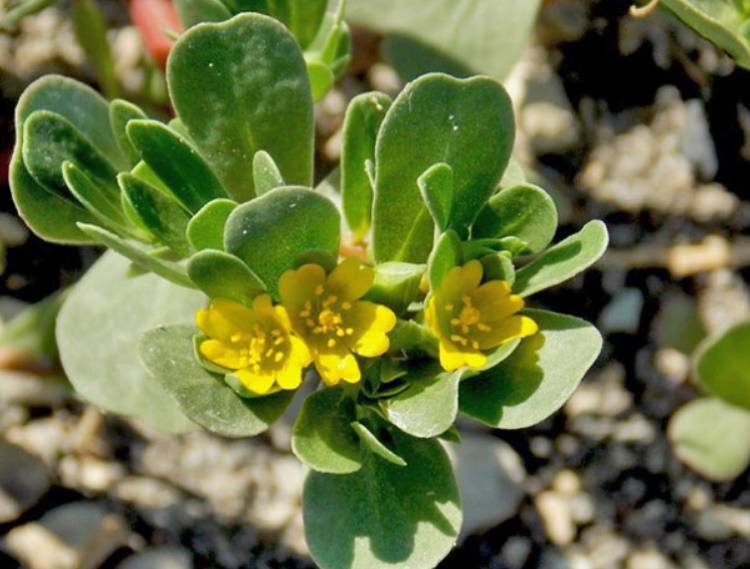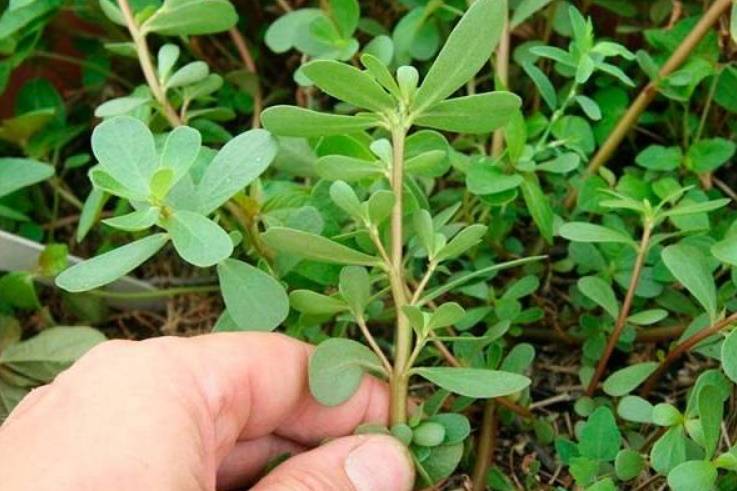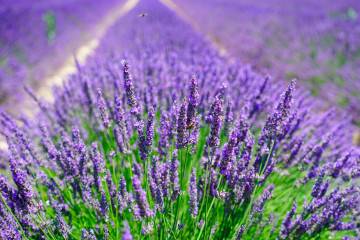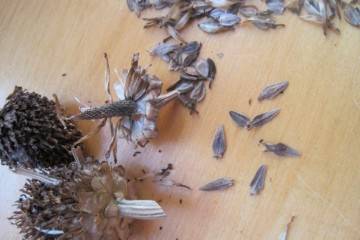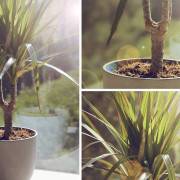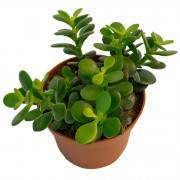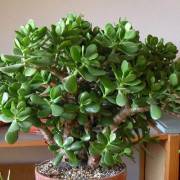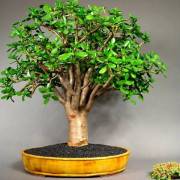Purslane garden - growing from seeds
Content:
For some owners of garden plots, purslane (lat. Portulaca oleracea) is a harmful herb, with which they wage a merciless, not always successful fight. In Armenia, in the Mediterranean, the herb purslane has been known since prehistoric times. In these countries, it is called dandur and is valued as a vegetable that is used to prepare various dishes.
Description Portulaca oleracea
In warm regions of a temperate climate, there are two annuals from the purslane family:
- Large-flowered purslane (rug) is an ornamental plant with double or simple inflorescences; it is used as a ground cover in flower beds in carpet compositions.
- Garden purslane or dandur is a plant with succulent leaves and stems grown for greens as a vitamin vegetable crop, it is also a weed known as wild purslane.
Depending on the person's attitude to the plant and the growing conditions, Portulaca oleracea can be both a vegetable delicacy and a weed. Purslane weed is a plant that must be disposed of by all available methods, up to the use of herbicides.
What does purslane look like?
Portulaca oleracea belongs to succulents, that is, those plants that accumulate moisture in their tissues and are able to survive in severe drought. Grows on any soil. Garden purslane, grown on fertile lands with regular watering and dressing, differs from the weedy wild fellow only in the size and fleshiness of the stems and leaves. The structure of the vegetative organs and inflorescences are similar.
Branched stems up to 30 cm long spread along the ground, smooth fleshy rounded-oblong leaves grow on them. The colors of the leaves, depending on the composition of the soil, climatic conditions, can be green, dark green, burgundy, yellow. The taste of the leaves and stems is spicy, slightly pungent, sour.
It blooms with small yellow flowers that open one after another for several hours during sunrise. In place of the inflorescences, fruit pods are formed, small seeds ripen in them. Unripe seeds are painted in a red-burgundy hue, ripe ones turn black.
Useful properties of Portulaca oleracea
Hippocrates, Arab, Indian healers, the ancient Egyptians knew what purslane is, what benefits it brings, the recipes from it knew. Once upon a time, purslane was prized for its magical and healing properties. Garlands were woven from grass to protect against evil spirits, scurvy, hemoptysis, kidneys, liver were treated with it, and the body was cleansed of venereal diseases.
The herb contains carbohydrates, alkaloids, minerals, organic acids, vitamins of groups C, B, PP, K. The sour taste of the plant is due to the presence of malic and oxalic acid in the tissues. Modern healers use it for healing wounds, treating diabetes, burns, as an antipyretic, anti-inflammatory, diuretic.
Purslane vegetable and medications from it, consumed in excess, can harm pregnant and lactating women.There are contraindications for taking medications, which include the components of purslane, they should not be used for hypertensive patients, patients with heart rhythm disturbances, with an allergy to the plant.
Cooking use
The low calorie content (up to 20 kcal per 100 g) of raw purslane leaves and stems made them a popular ingredient for use in fasting diets. Not only tender young plants are used for food. Coarse old shoots are pickled, stewed, soups are cooked with them, casseroles are made, salads are prepared.
Growing garden purslane from seeds
Growing purslane from seeds begins with questions:
- when to plant seeds for seedlings;
- how to prepare seeds;
- which section of the garden to choose for planting seedlings;
- how to prepare a garden bed.
Determining the timing of sowing seeds at home plays an important role, because seedlings cannot be planted in open ground until the threat of recurrent frosts has passed. It takes about 2 weeks from the moment of sowing seeds to germination. It will take another 2-3 weeks for 3-4 true leaves to form.
That is, in those regions where spring fully comes into its own by mid-April, you can sow seeds in early March. In colder regions, it is necessary to postpone the sowing of seeds.
Growing seedlings
Dandur seeds are very hardy, because the plant practically does not get sick, it contains many bactericidal elements that protect it from rot and viruses. Therefore, it is impractical to engage in seed disinfection. Seeds do not need stratification either, because all purslane plants are heat-loving plants, cold stresses only reduce the number of germinated seeds.
Seeds are sown in mini-greenhouses on the surface of moist fertile compacted soil. The seeds are only slightly pressed into the ground, but they are not sprinkled with soil. The greenhouse is covered with a transparent cover, transferred to a warm place, protected from direct sunlight.
After the emergence of seedlings, the greenhouse is transferred closer to the light. In order for the seedlings not to stretch out, it is necessary to create such conditions under which they will be exposed to the light for at least 14 hours every day. After the formation of 3-4 true leaves, the seedlings dive into other planting containers. Bushes with 8-10 leaves are planted in a garden bed in open ground.
Vegetable purslane runs wild quickly. Uncontrolled ripening and self-seeding of seeds can lead to the need to solve the problem of how to get rid of purslane in the garden forever.
Landing in open ground
Before planting in the garden, seedlings must be gradually accustomed to the conditions of the street. The containers with seedlings are first taken out into the street for 20-30 minutes, then the time they spend in the open air is extended daily. After a week, you can start the transplant. At the time of planting, the ground must be warmed up to at least 15-18 ° C.
Site selection
Dandur will grow on any well-lit, non-waterlogged soil. It should be borne in mind that on depleted land, it will not become juicy and fleshy enough to be used for culinary purposes. Therefore, for the cultivation of edible purslane, a site with fertile soil is selected or the soil is fertilized in advance with organic substances - rotted manure, bird droppings, humus.
Transfer
The transplant is carried out in pre-marked beds. Between the holes on all sides, leave a free space with a distance of about 30 cm. Purslane seedlings have very good survival rate, but still it is better to plant each bush so as not to injure the root system.
Care
Until the seedlings are fully acclimatized, purslane bushes are regularly watered, but not poured, in order to prevent root decay. Around them, the soil is loosened, weeds are destroyed.
After new leaves appear on the seedlings and the seedlings get stronger, you will need to pinch the top of each plant. This will speed up the growth of side shoots, help grow a dense bush and increase its vegetative mass.
Harvest
The first cut of the stems is carried out 30-40 days after planting. After the next growth of the required number of stems and leaves, the cut is repeated. Sometimes, after the re-formation of the green mass, the bushes are pulled out of the ground completely in order to prevent flowering and dispersal of seeds and not to think about how to deal with purslane in the garden.
Garden purslane, how to get out of the garden
It is very difficult to remove a wild purslane from a personal plot. Its light seeds are carried by the wind over long distances, and wherever there is enough sun and there is a free piece of land, they germinate. And they do it not simultaneously, but in turn.
Fight the weed in a variety of ways. The most affordable and common is weeding with a hoe or flat cutter. But this method has a significant drawback. All pieces of purslane - leaves, stalks, roots cut with a weeding tool, root very quickly and turn into a new bush. Therefore, only careful hand weeding can completely destroy the bush.
There are two effective ways to deal with wild purslane: the use of herbicides and a deep digging of the garden with the overturning of the earth layer. Digging like this will cause the seeds to be buried deep underground and will not be able to germinate.
Herbicides
Modern preparations for the destruction of weeds help to remove all unwanted plants. There are drugs of continuous and selective action. The first ones destroy all vegetation located on the cultivated area. The latter are used to control a specific type of weed.
Depending on how clogged the backyard is with wild purslane, a decision should be made on the use of a specific tool. To destroy weeds, Hurricane, Zenkor, Tornado, Roundup, Napalm and their analogues are used.
Before using drugs for weed purslane, it is worth considering whether to turn the disaster into profit, and try to offer the herb to those who can use it for food or as medicine.
